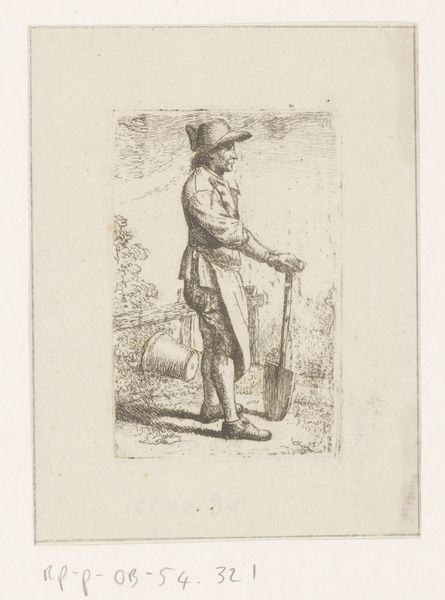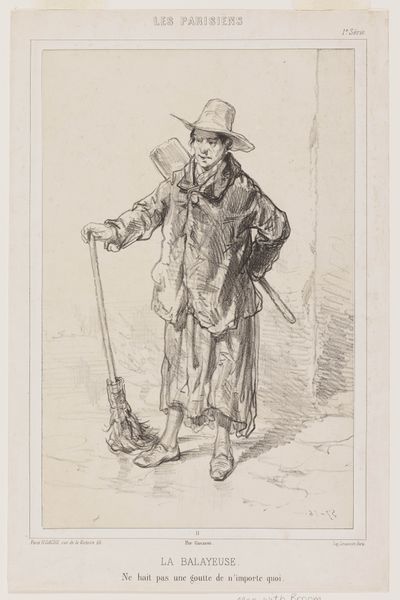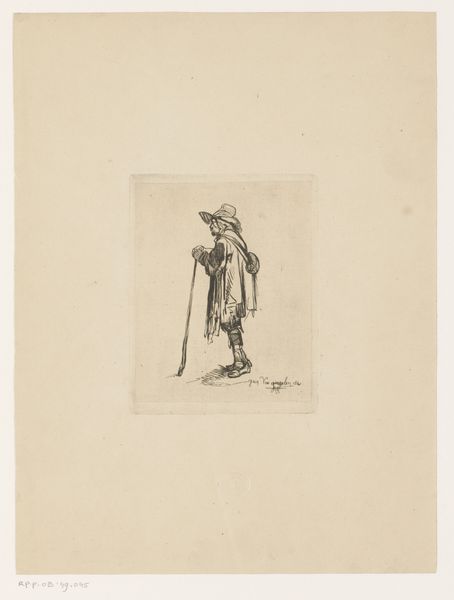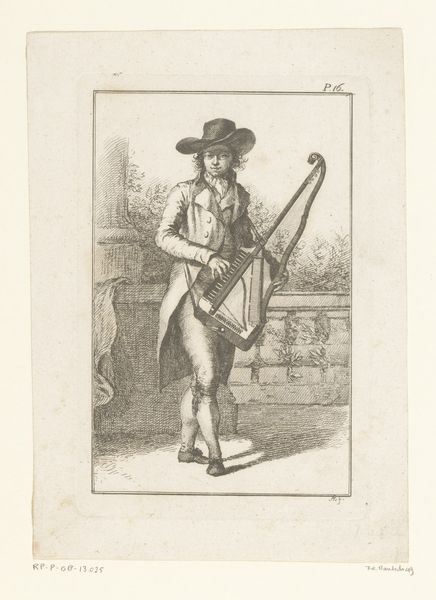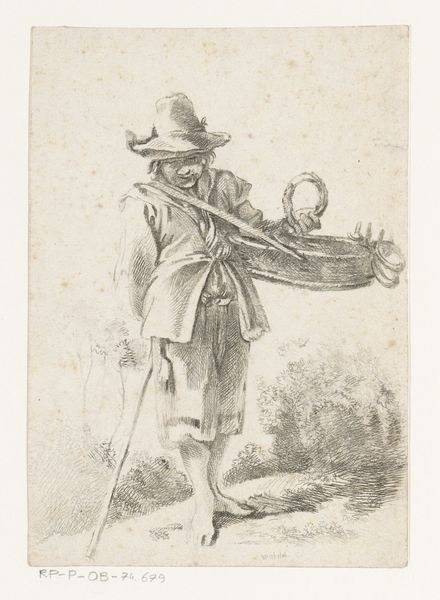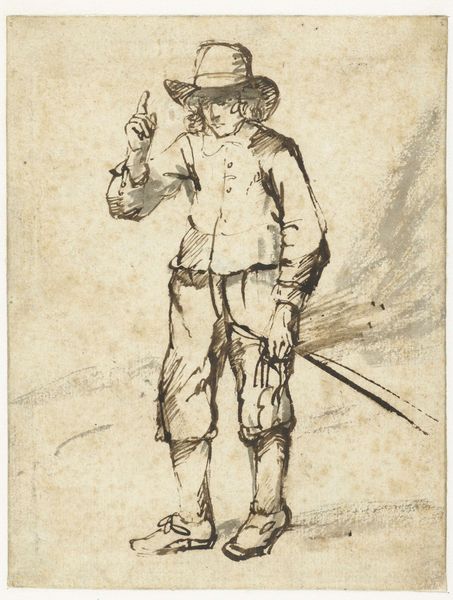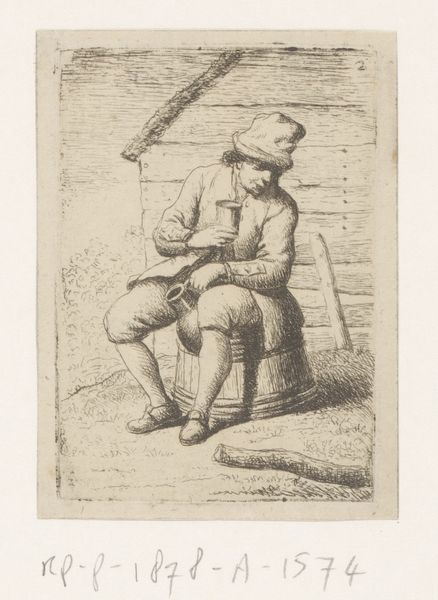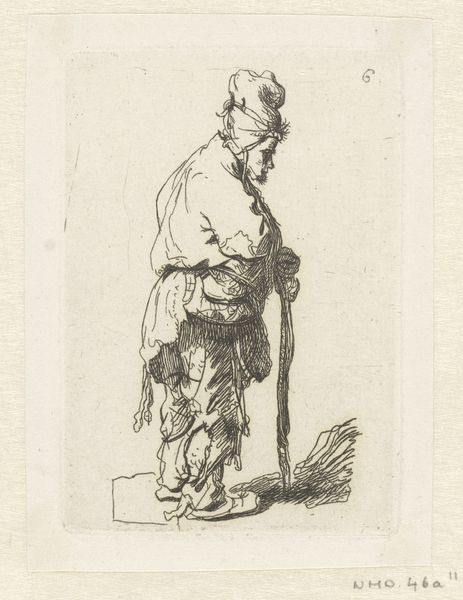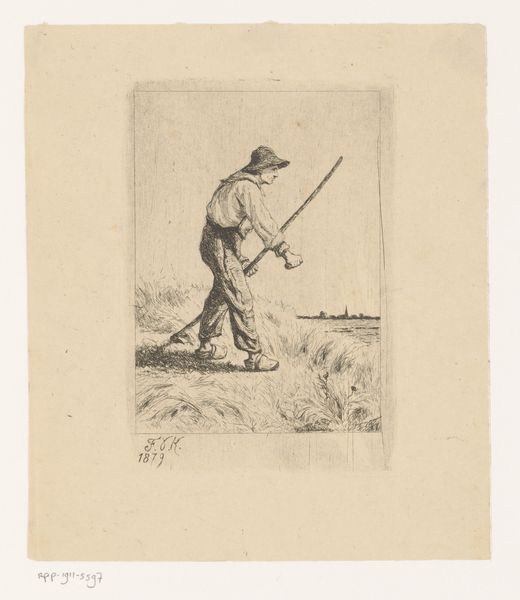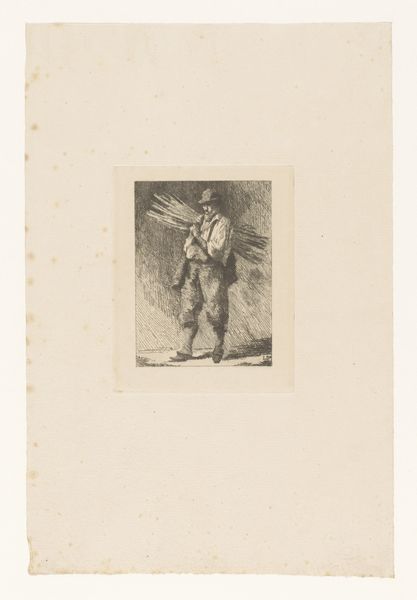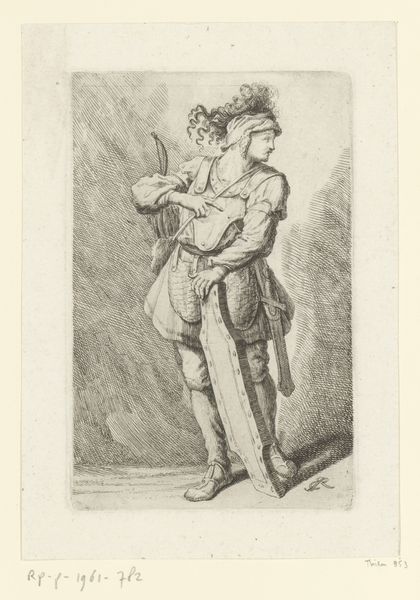
drawing, print, etching
#
portrait
#
drawing
#
comic strip sketch
#
light pencil work
# print
#
etching
#
pencil sketch
#
landscape
#
personal sketchbook
#
idea generation sketch
#
sketchwork
#
ink drawing experimentation
#
pen-ink sketch
#
sketchbook drawing
#
genre-painting
#
sketchbook art
Dimensions: height 85 mm, width 60 mm
Copyright: Rijks Museum: Open Domain
Editor: Here we have Hendrik Willem Schweickhardt’s "Boerenman leunend tegen een houten paal," placing it sometime between 1756 and 1797. It's a drawing, an etching, so inherently reproducible, yet it depicts what seems to be a very specific individual, a peasant. What does it say about art, about value, to elevate a working man in this medium? Curator: It's fascinating to consider the means of production alongside the subject matter. The etching process itself is key. Think about the labor involved in creating the plate, the acid baths, the inking, the printing – a relatively efficient way to disseminate images. But to what audience? Were these affordable for the very people they depicted? Editor: So, it’s less about celebrating the individual and more about the potential market for this image, its consumption? Curator: Exactly! And also consider the social context. This image arises during a time of significant social and economic upheaval. Questions about labor, class, and the representation of everyday life were circulating. Schweickhardt is, in a way, producing a commodity *of* the working class, designed to be consumed by a different social stratum, in a form available thanks to technology. How does that tension inform your reading? Editor: It almost feels…exploitative when put that way, the romanticisation perhaps obscuring the reality of that boerenman’s labor. He’s leaning, relaxed even, but the image becomes part of a much larger economic system. Curator: Precisely. It encourages a critical approach that values labor and its representation over individual virtuosity. Editor: I hadn’t thought about it that way before, how the very act of making the image becomes a commentary itself. Curator: The material tells the story.
Comments
No comments
Be the first to comment and join the conversation on the ultimate creative platform.
